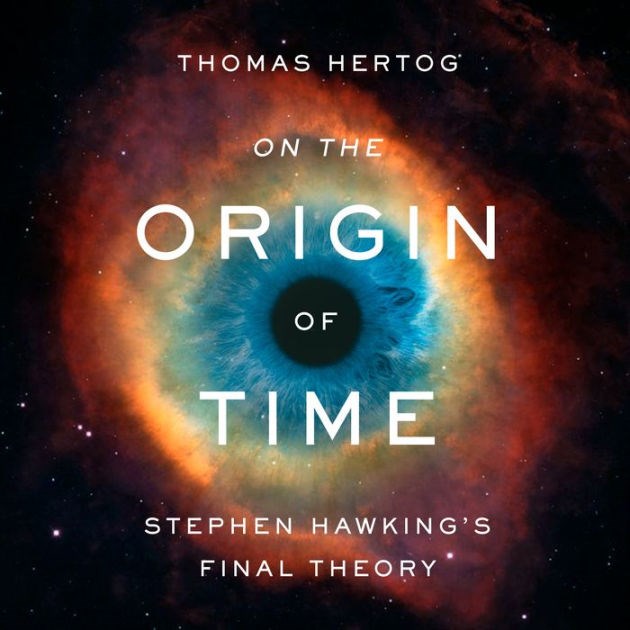On the Origin of Time – Stephen Hawking’s Final Theory
Thomas Hertog, Bantam New York, 313 pages
This is not a book for a leisurely afternoon read in the car while waiting to pick up the kids after hockey practice. It needs concentration and a willingness to reread some passages, dealing as it does to a large extent with aspects of quantum physics, which by itself often requires a suspension of disbelief.
Not a very enthusiastic opening statement for a book review you may think, but readers who persevere will be more than richly rewarded with insights into some of the most exciting concepts in modern cosmology.
The author was for a long time a collaborator and friend of Stephen Hawking, who certainly needs no introduction. His admiration for his late colleague shines from almost every page.
Together they spent years theorizing about the universe’s biophilic nature (a word Hertog clearly likes), that is to say, why is our cosmos so apparently fine-tuned for life. Change just one or two of many physical constants by miniscule amounts and we won’t be here to discuss this phenomenon.
Why is this so? Hawking and Hertog weren’t the first to examine this and won’t be the last. This book describes their thoughts in fascinating and almost overwhelming detail.
Various theories have been proposed to explain this, some gaining general acceptance, others seemingly outlandish even when finding favour in the physics community. After all, when a theory states that every time something happens the universe splits into consecutively multiplying and different multiverses, not in contact with each other, some where the observer adds sugar to coffee and some adding salt, or adding nothing at all (or a gazillion other possibilities), it may be hard to take seriously.
The thing is: the two-split experiment (see link at the end), which is fundamental to quantum theory and which has been proved multiple times, is one of the strangest concepts I know, but the phenomenon it illustrates is real – so what must one make of these strange theories which also involve quantum physics?
Hertog starts his walk through the cosmos with the big bang and the Belgian astronomer-priest Georges Lemaître, explaining Hawking’s “no-boundary” theory of time folding into space, ceasing to exist at the very beginning of the universe. We are then told about the quantum soup of particles which emerged, ending with the realization that the laws of physics as we know them today probably emerged right at the beginning, having been subject to what one may perhaps call natural selection in the style of Darwin.
Hawking has disowned his bestselling “Brief History of Time” of some years ago, and together with Hertog devised what he calls “top-down” cosmology. This viewpoint holds (inter alia) that the nature and course of development of the universe is influenced by observers, which are often and incorrectly stated by some journalists to be humans. This need not be the case, a casual glance by a mouse will suffice, or an electron hitting a crystal.
This state of affairs is (for me) somewhat reminiscent of the anthropic principle, although Hertog never mentions it.
We end with the realization that the universe may be a hologram: “At a conceptual level, holography seals the top-down approach to cosmology. The central tenet of holographic cosmology – that the past projects from a web of entangled quantum particles that form a lower-dimensional hologram – implies a top-down view of the universe…. Holography tells us that there is an entity more basic than time – a hologram – from which the past emerges.”
Whatever one’s opinion of the Hawking-Hertog universe may be, I find one aspect deeply satisfying: previously cosmologists looked at the universe as if from the outside in. Hawking and Hertog’s perspective is from the inside – we are part of the universe, not separate from it.
This book is for readers with an interest in physics and astronomy. While some concepts are difficult, no knowledge of physics or mathematics is needed.
Anyone who wants to find out more about the double slit experiment can watch this video: https://www.youtube.com/watch?v=A9tKncAdlHQ.
The views and opinions expressed in this article are those of the author, and do not necessarily reflect the position of this publication.




